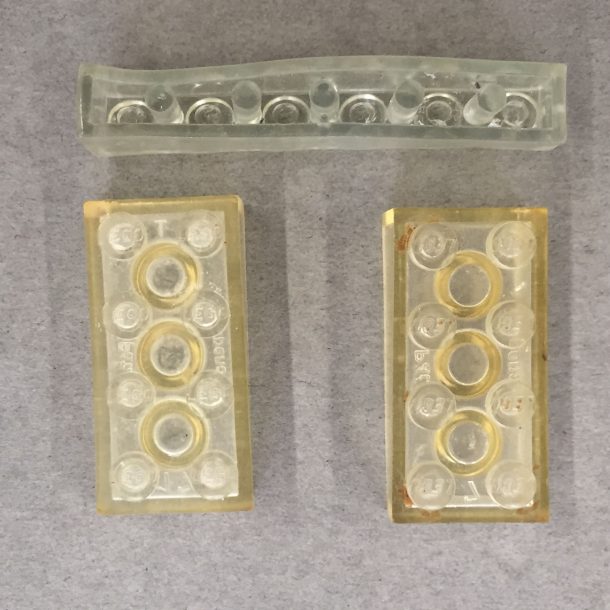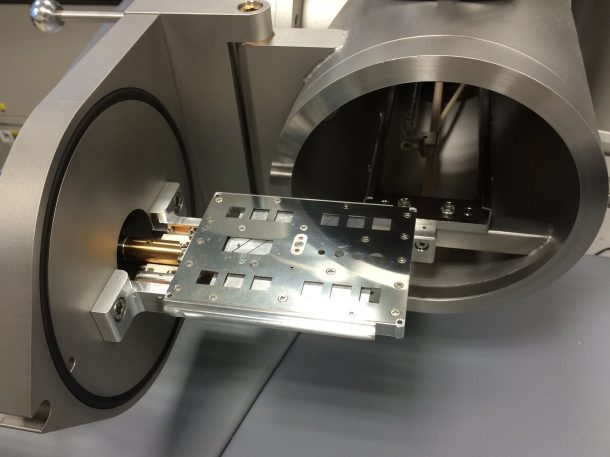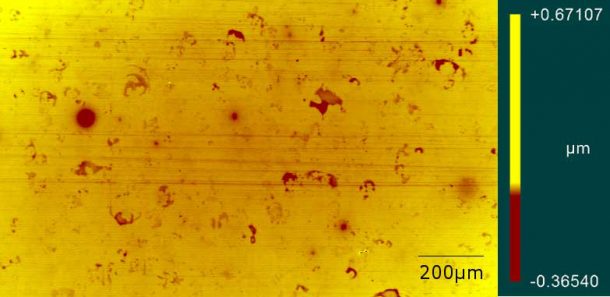by Anna L Fricker, Research Postgraduate, V&A and Imperial College London
The issue of plastics conservation is one that has been highlighted in this journal several times over the last twenty years and has most recently focused on the need to look at a proactive approach to the care of polymeric artefacts1. As part of this approach, a collaborative PhD studentship between the V&A and Imperial College London has been funded by the Arts and Humanities Research Council (AHRC) to investigate the effect of cleaning techniques on plastics found in museum collections. This work builds on the findings from the recent EU-funded project ‘Preservation of Plastic Artefacts in Museum Collections’ (POPART).
The principal issues around the cleaning of polymeric artefacts in museum collections are two-fold. The first consideration is whether the cleaning techniques used are effective in removing soil and contaminants from the surface of an object. The second consideration is whether the cleaning process itself causes damage to an artefact or alters its artistic integrity. It is worth noting that any damage to an artefact may only become apparent at a later date and that the degradation behaviour of plastics is known for both its unpredictability and irreversibility.
With so many plastic materials available, it is difficult to provide general recommendations for the preservation of these objects. Similarly, cleaning protocols for polymeric artefacts need to take into account the molecular composition of the polymer and any additives that have been incorporated into the plastic to improve its visual appearance, physical behaviour or stability. The solubility of plastics also needs to be taken into consideration: organic solvents may dissolve the plastic or cause stress cracking as a result of their application. Furthermore, the properties of a plastic can change with age, so a treatment that may be suitable for a recently-manufactured plastic object may not be suitable for an aged polymeric artefact (Figure 1).

The aim of this work is to analyse the effect of wet and dry cleaning treatments on plastic surfaces using highly sensitive surface analysis techniques. It is believed that this approach will allow the detection of defects and residues that are not possible to see with the naked eye or via the use of light microscopy techniques. In particular, the use of white light interferometry enables the quantification of any surface damage such as scratches, while scanning electron microscopy allows for examination of the substrates at high magnification. Time-of-flight secondary ion mass spectrometry (ToF-SIMS) is used to examine the surface for residues or other chemical changes.
Two plastic substrates have been chosen for examination (Figures 2 and 3). Poly (methyl methacrylate), otherwise known as Perspex® or acrylic, is commonly found in collections in the form of sculptures or casing for electronic devices. As a relatively stable plastic, it provides a valuable reference for cleaning techniques. Polystyrene has been chosen as the second substrate due to its prevalence in the V&A’s Museum of Childhood. The cleaning agents for these plastics have been chosen with reference to the POPART findings and comprise solvents, detergents and deionised water, applied with a synthetic microfiber cloth. Both unsoiled and artificially soiled substrates are being investigated as well as real-world samples. Work is also planned to determine how these plastics behave under artificial aged conditions.


The project is currently halfway through its three-year duration. Indications so far are that this work will provide valuable information about the behaviour of these plastic substrates and the effects of cleaning treatments. It is hoped that this work will reveal more information about the microscopic changes occurring as a result of conventional cleaning protocols and will therefore inform future care and conservation decisions for modern materials.
Acknowledgements
I would like to thank the Arts and Humanities Research Council (AHRC) for funding this studentship through the Collaborative Doctoral Award scheme. I am also grateful to David S. McPhail, Reader in Surface Analysis, Imperial College Londo,; Brenda Keneghan, Senior Polymer Scientist, V&A, and Boris Pretzel, Head of Science, V&A.
References
- Keneghan, Brenda. ‘Developing a Strategy for Dealing with Plastics in the Collections of the V&A’, V&A Conservation Journal 61, (Autumn 2013) (online). Accessed 24 April 2015.


